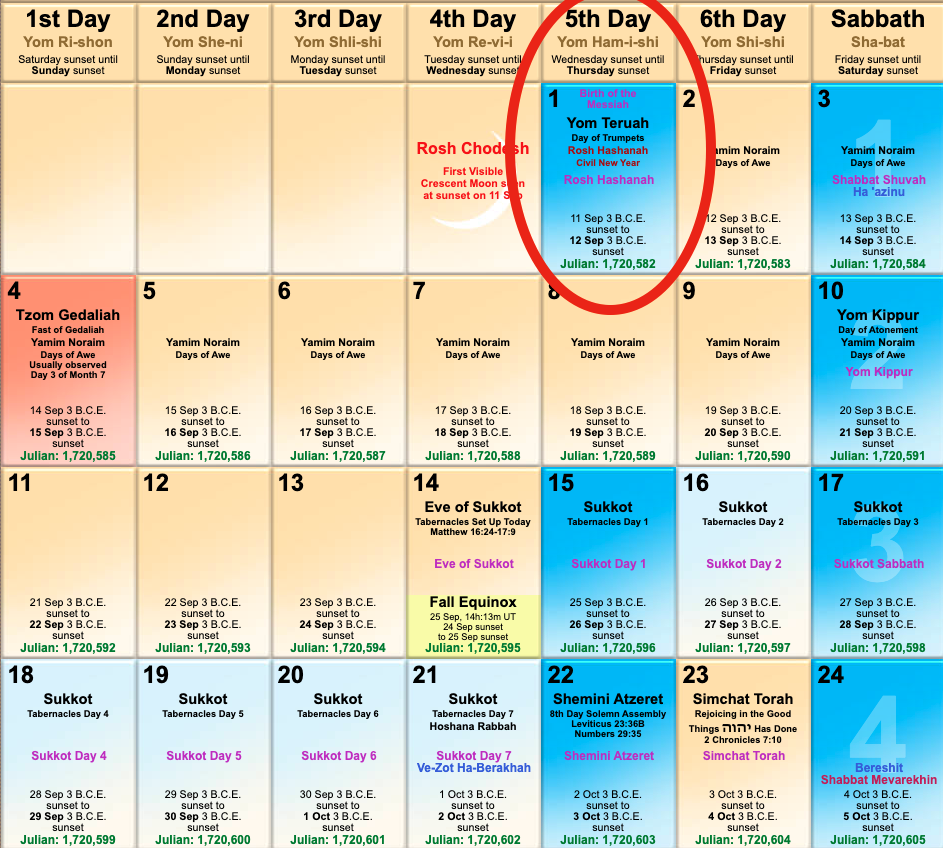
(23) Then the Lord spoke to Moses, saying, (24) Speak to the children of Israel, saying: In the seventh month, on the first {day} of the month, you shall have a Sabbath {rest}, a memorial of blowing of trumpets, a holy convocation.
[Leviticus 23:23–24 NKJV]
Scriptures: Leviticus 23:23–25; Numbers 10:1–10; 29:1–6.
Yom Teruah, the Day of Trumpets, begins at sunset Friday September 18, 2020.

Image Copyright (c) www.torah calendar.com
The fifth feast of the Hebrew religious year is the Feast of Trumpets, or in Hebrew, Yom Teruah. It is probably best known by its other name, Rosh Hashanah, literally, “the head of the year” (New Year). Although Trumpets is the fifth feast of the Hebrew religious year, it takes place on the first day of the month of Tishri—the Hebrew civil New Year.
Summary: The Feast of Trumpets occurs on the first day of the seventh month and introduces the three “High Holy Days.” The festival is characterized by the blowing of trumpets in the Temple and throughout the land in preparation for the coming Day of Atonement—the national day of spiritual cleansing.
Key features: The Feast of Trumpets rather obviously revolves around one particular symbol—the trumpet. There were two kinds of trumpets used in Israel, one’s made from ram’s horns (called shofar), and trumpets made of silver. Although the two kinds of trumpets were used for different purposes, for brevity sake, we will focus on the symbolism common to both.
In scripture trumpets symbolize the spoken prophetic word coming to God’s people. As an example, the record in Numbers 10:1–10 gives nine specific occasions when trumpets were to be blown in Israel. To call assemblies (v.2); to announce God’s movements (v.2); to call leadership together (v.4); for alarms (vv.5–7); during times of war and oppression (v.9); for days of celebration (v.10); for solemn assemblies (v.10); for the beginning of months (v.10); for offerings and sacrifices (v.10).
Although trumpets were blown to mark the beginning of each new month, this feast has special emphasis—so much so that it is called the Feast (or Day) of the blowing of Trumpets—thereby setting it apart from every other new month festival.
The Day of Trumpets is the first day of the civil New Year, thereby calling to remembrance that the Hebrew calendar has two New Year’s days—one civil (Tishri 1), and one religious (Nisan 1). Thus, twice a year the Jews experience both an ending and a new beginning—the old and the new, the first and the last, the former and the latter. This is a common theme throughout scripture that points directly to the person of Jesus Christ, the author and finisher of our faith.